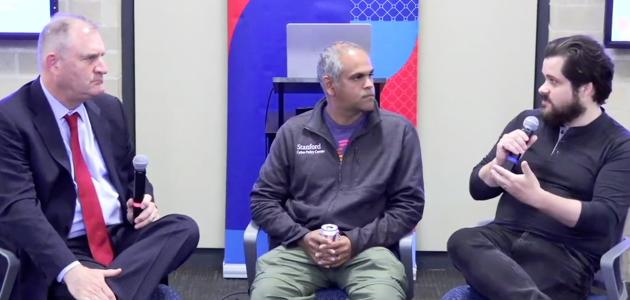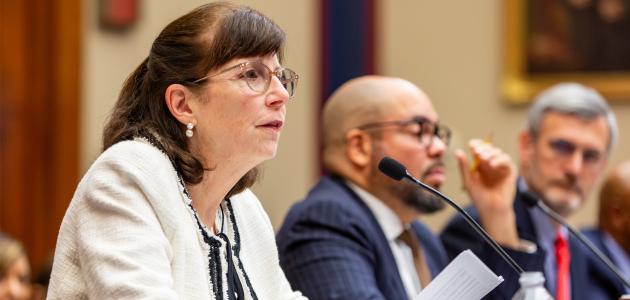
Aiming to provide comprehensive analysis of state and local government policy, Hoover fellows generated new research on the full composition of US state debt and the unique political economy of American Indian territory. The Hoover Institution also convened a major conference in January dedicated to increasing information sharing between policy researchers and civil servants.
FEATURED ANALYSIS

Hoover Hosts State and Local Policy Research Conference
Civil servants and policy researchers from across the United States met at the Hoover Institution on January 22‒23, 2024, for the inaugural Conference on Collaborative State and Local Policy Research. Researchers presented papers evaluating the efficacy of a variety of new government programs. Topics discussed included reforming criminal justice, improving school attendance, counseling and supporting the unemployed, and evaluating the job-creating power of business tax incentives.
Click here to learn more.
HIGHLIGHTS

Documenting State Debt Structure Using Machine Learning
Hoover research fellow Oliver Giesecke used machine learning to obtain the structure and layout of all US state debt issued between 2006 and 2021. In this paper, he analyzes the debt data and finds that revenue bonds are the most common format in issuing debt. He also calculates the average time to maturity of state debt during this period. He finds a strong negative correlation between the financial health of state borrowing and the duration to maturity of the debt that state holds.
The Political Economy of American Indian Policy
Using concepts of public choice and new institutional economics, senior fellows Terry Anderson and Dominic Parker, with colleague Ilia Murtazashvili, write about the various ways federal and state policies have failed to promote economic prosperity in Indian territories. They cite past scholarship examining a variety of segments of the economy on a typical reservation—including casino operation, fisheries, and land allotment—to identify barriers to Indigenous economic development.
Newsom’s Latest Proposal Would add $6.4 billion to California’s $1.6 Trillion Debt
In Hoover’s California on Your Mind web channel, senior fellow Lee Ohanian writes that California’s accumulated state and municipal debt now stands at $1.6 trillion, or $125,000 per household. As Ohanian explains, Gov. Gavin Newsom is proposing a housing and addictions treatment plan called Proposition 1, funded with a $6.38 billion bond issue. Ohanian goes on to document previous failures California experienced when issuing bonds to fund a particular project, citing the 2008 high-speed rail line bond issue as an example.
Fellow Spotlight: Joshua D. Rauh
 Joshua D. Rauh is the Ormond Family Professor of Finance at Stanford University’s Graduate School of Business and a senior fellow at the Hoover Institution. He also leads Hoover’s State and Local Governance Initiative. He served as principal chief economist on the President’s Council of Economic Advisers from 2019 to 2020. His research focuses on pension viability, taxation, and public finance in general. He has published numerous journal articles and has received various awards recognizing his scholarship including the Brattle Prize and the Smith Breeden Prize of the American Finance Association.
Joshua D. Rauh is the Ormond Family Professor of Finance at Stanford University’s Graduate School of Business and a senior fellow at the Hoover Institution. He also leads Hoover’s State and Local Governance Initiative. He served as principal chief economist on the President’s Council of Economic Advisers from 2019 to 2020. His research focuses on pension viability, taxation, and public finance in general. He has published numerous journal articles and has received various awards recognizing his scholarship including the Brattle Prize and the Smith Breeden Prize of the American Finance Association.
For more insight on important state and local issues visit
https://www.hoover.org/focus-areas/empowering-state-and-local-governance























